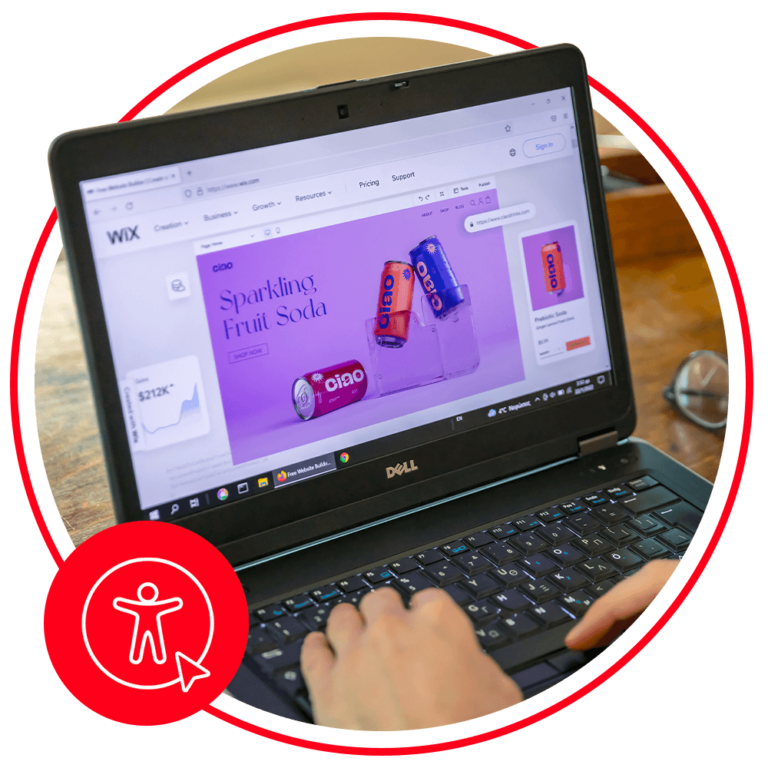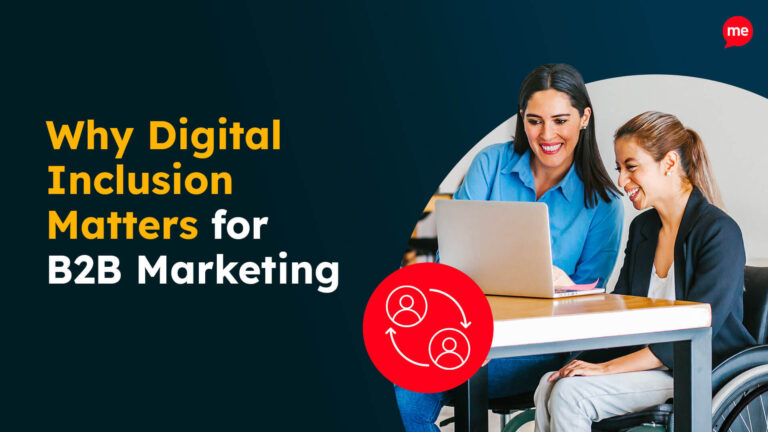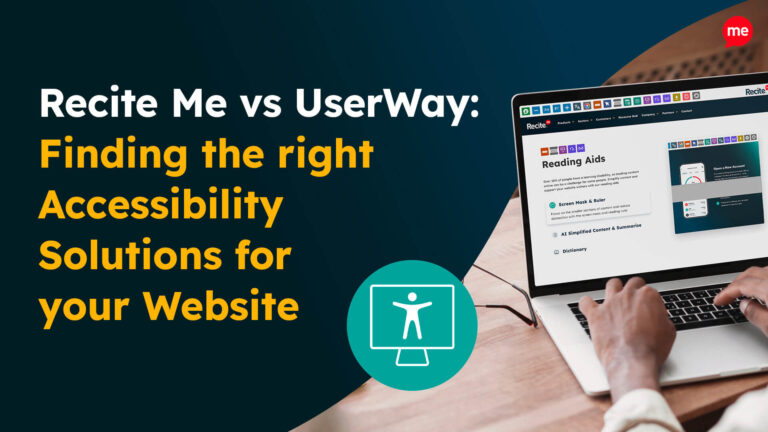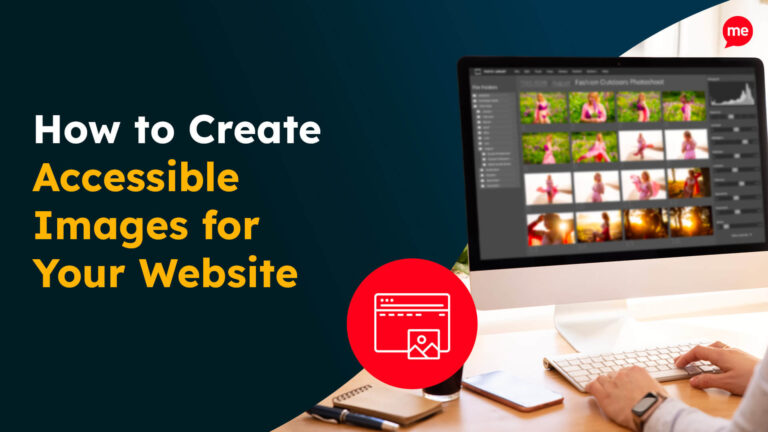Get Your Free Accessibility & Inclusion Toolkit
Download NowOver 8.5 million live websites currently use Wix. It’s one of the most popular website builders, along with WordPress and Squarespace. But is Wix website accessibility up to scratch? Wix accessibility is essential to ensure your website can be accessed by disabled internet users.
As nearly 25% of the British population is disabled, it’s essential to create an accessible website. From legal implications to social good, there are many important reasons for Wix site accessibility.
If you’re not sure where to start, read on to learn about the steps for making your Wix website inclusive for disabled audiences.

What are the key accessibility standards for building Wix websites?
Accessibility for Wix websites should typically be grounded in the WCAG (Web Content Accessibility Guidelines). Developed by the World Wide Web Consortium, these guidelines have become a benchmark for web accessibility.
WCAG 2.1 Level AA is the gold standard that has been recommended by a variety of organizations, including the UK and US governments.
These standards provide guidelines for web content design. It covers websites, including image, text and video content, but also other forms of digital tech, such as applications and PDFs.
Learn more about improving your website accessibility using WCAG guidelines.
Get a free automated accessibility check of your websites homepage. This will identify and highlight any compliance issues on your website. Followed by recommendations on how to implement the necessary changes to make your website more accessible.
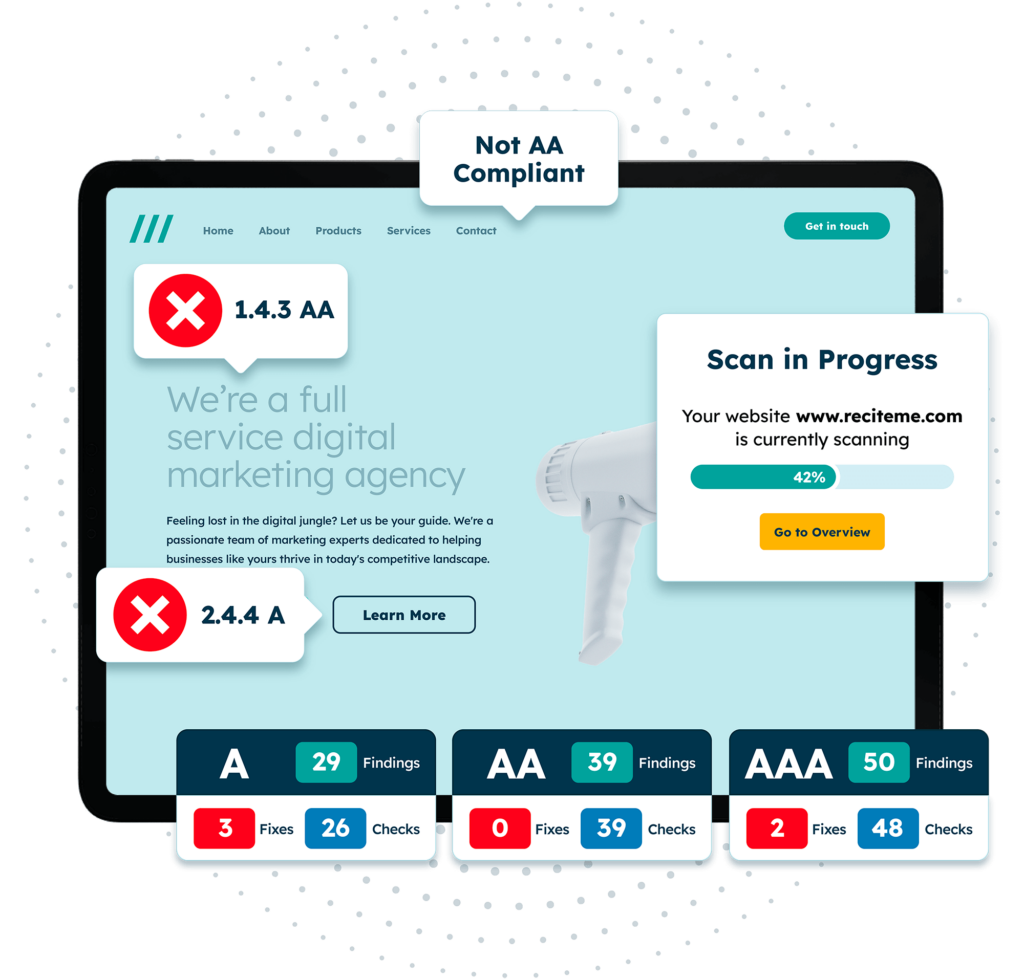
What Wix website features need to be made accessible?
WCAG 2.1 Level AA provides specific standards for web content that need to be met. But which features should you aim to adjust? Whilst this will typically depend on your website and its audience, there are important aspects to address.
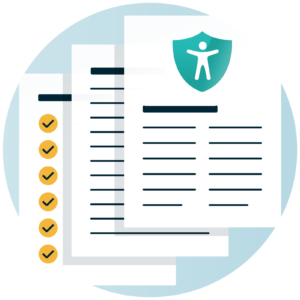
Text content
Written content is an important priority for Wix website accessibility, as it will make up a large part of your site. However, textual content is not accessible for all. For example, long paragraphs of text can be difficult for those with cognitive disabilities to read, so it’s best to keep sentences short. You should also aim to choose words that are easy to understand, rather than more complex alternatives.
But it’s not just what you say, it’s the way you say it. Split content into clear paragraphs, with bullet points and headings to draw the reader’s eye through the text. Make sure your text is also readable with a screen reader or other technologies that assist with reading.
Images
Perhaps one of the most obvious digital accessibility issues is visibility. For visually impaired web users, image content is challenging to access. Adding alt-text to the image can enable access via screen readers. As it sounds, this forms a textual alternative to the visual content of the image.
In line with Level AA guidelines, only certain types of images require alt-text. Any images that add to the meaning or usability of the web content will need alt-text. In this case, the alt-text should convey the same content as the image, but in text form.
So, “a woman’s face” is not a particularly helpful alt-text description. “Black and white photograph of Marilyn Monroe” provides more useful information for the reader.
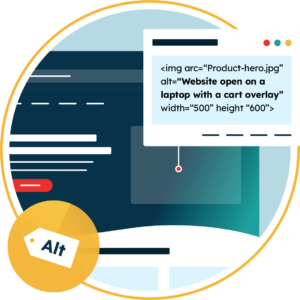
Any images that are only decorative, such as backgrounds or patterns, should not have alt-text.
Videos and audio content
Video and audio content is an essential part of your Wix website. So, it’s important to make sure all web users can enjoy it. To improve accessibility for people with hearing or auditory-processing disabilities, you’ll need to provide text alternatives to the auditory content.
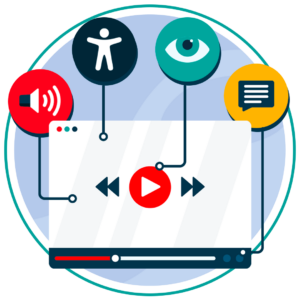
You’ll need to add synchronised captions to your video content, whether it’s pre-recorded or live. Pre-recorded content will also need a transcript, which can be posted beneath the original video as text or a downloadable file.
There are a couple of easy ways to add captions to make your videos accessible. You could either add them with video editing software, or upload them to platforms like YouTube or Vimeo, which make captions simple to add. You can then embed the external video onto your accessible Wix website.
Navigation
Web pages are the core of your website, but the navigation between those pages matters too. Just as physical transport should be accessible, so should digital navigation.
Not all web users will access websites through a mouse. Those who struggle with visual impairments and poor motor control may use keyboards exclusively to navigate the web. So, you should aim for all interactable aspects of your Wix site, including navigation menus and buttons, to be fully keyboard-accessible. That means they should function with the Tab, Enter and Arrow keys alone.
Ensure any buttons are described clearly within their anchor text to make navigation accessible by screen readers. This is important as screen readers read out website content, so any unclear wording could be confusing.
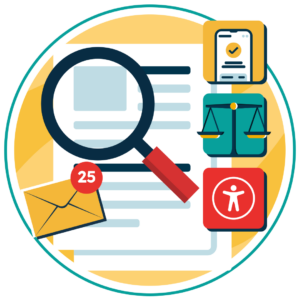
For example, “View” would be unclear anchor text for a button. It doesn’t clarify what will be viewed by using the button. “View all products” is much clearer, as it explains that selecting the button will link to a product list page.
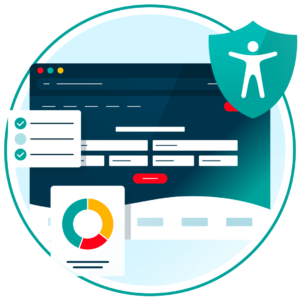
Website forms
Accessible website forms enable disabled users to interact fully with your business – whether buying products or using your services. To make your Wix site accessible, you’ll need to ensure that:
- Forms are fully navigable by keyboard
- Error messages are displayed clearly
- Input fields have clear, visible labels for screen readers
Colour and design
Aside from the content itself, the visual impact of your website can affect its accessibility. For example, people with visual impairments may struggle to read poorly contrasted text. So, whilst a colour scheme might look nice, it could prevent some from using your Wix site.
To stay in line with WCAG recommendations, you should aim for a minimum contrast ratio of 4.5:1 for normal-sized text (and any images of text this size). For larger text of 18pt or above, or 14pt bold text, the required ratio goes down to a minimum of 3:1. There’s no requirement to adjust contrast for decorative elements, though. Not sure where your website contrast stands? Don’t worry – it’s easy to review with a colour contrast checker.
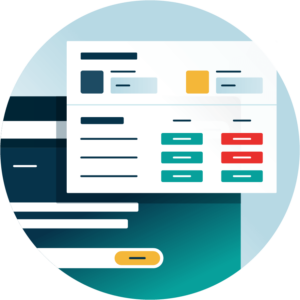
It’s not just contrast that matters in accessible web design. Make sure to add clear visual guides to your website elements, such as displaying icons to highlight form errors. Along with visuals, consider the structure of your website. When in doubt, keep it simple. Avoid distractions and visual overwhelm, and stick to clear page structure with headings to assist people with cognitive disabilities.
Focus indicators
How do you figure out what’s clickable on a website? How do you determine where you are on a website? Chances are, focus indicators help you out. These highlight the interactive element that is currently being “focused on”. This is because it’s either been clicked on, or in the case of most disabled users, selected by keyboard or voice command.
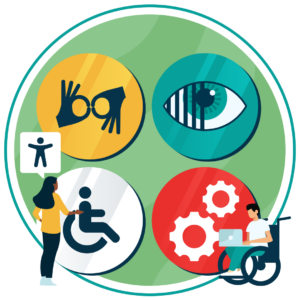
Focus indicators typically look like a colour outline, glow or shadow around the selectable element. They help to define the selectability, use and position of elements on your webpage, including:
- Interactable buttons
- Web links
- Form fields
These indicators are essential for web users with visual or motor disabilities, who may use a keyboard or screen reader to interact with your website. Focus indicators make it clear to them exactly what’s selected. As with text, you’ll need to keep indicators well-contrasted with the background – and aim to style each element, rather than relying on browser styling.
Are there any accessibility features built into Wix?
Yes, Wix has several WCAG-compliant features that help to make your website accessible. These include:
- Keyboard functionality: Wix websites are fully keyboard-functional across entire ecommerce stores, ensuring that keyboard users get an equal experience of their websites.
- Easy-add alt-text: Just click on the image and select the settings icon, then you can add in any alt-text.
- Skip to content: As it sounds, this lets keyboard users skip right to the main web page content, avoiding trailing through the menus and other elements at the top of the page.
- Smart focus ring: These work like focus indicators, highlighting the selected element. The rings feature two contrasting colours, so they’re easy to see.
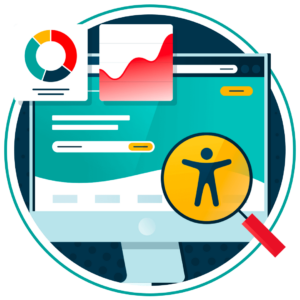
Wix also has an Accessibility Wizard that scans for accessibility issues on your website. This can help you identify what needs to be resolved.
Although Wix’s accessibility features are helpful, it’s best not to rely on them. Instead, take a proactive approach to your web accessibility and usability. Keep looking out for ways to improve inclusivity, and develop your knowledge through training, wherever possible.
Useful tools for building accessible Wix websites
If you’re not sure about where to start, then don’t panic. Digital tools can make accessibility easy and tailored to your business’ needs.
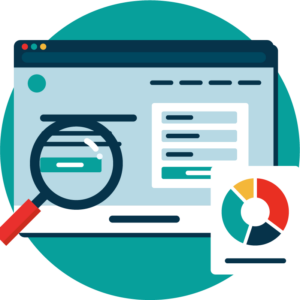
Website accessibility checker
Website accessibility issues can be far-reaching, and it can be challenging to pinpoint them all manually. Accessibility scans can provide a full scan of your website, including image content and PDFs, to highlight issues. For example, Recite Me’s website accessibility checker measures against the WCAG 2.2 accessibility guidelines.
If any aspects are non-compliant, the checker tool also provides auto-generated, AI-powered fixes. You can also review these suggestions before implementing them.
Accessibility checklist
Once you’ve explored potential issues through an accessibility scan, aim to follow-up by checking manually. Whilst AI can be effective, human oversight ensures that nothing is missed.
Again, it helps to have guidelines about what to look for. Free accessibility checklists provide steps you can action to improve accessibility for your web forms, digital media, and content design.
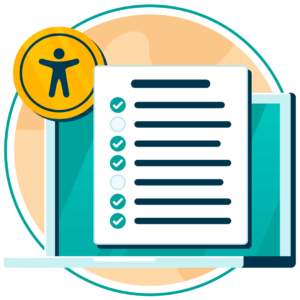
Assistive toolbar
Inclusivity isn’t one-size-fits-all, so your website shouldn’t be either. Disabled people have diverse needs, so it’s essential to adapt to these requirements.
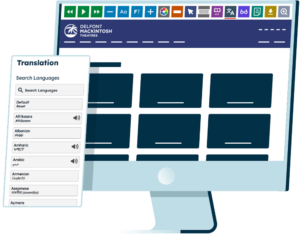
It can be easy to assume what disabled people need from a website. However, allowing web users to customise their experience of your website puts them in direct control. So, leveraging an assistive toolbar can boost inclusivity further.
Assistive toolbars enable customisation of your website, including for font size and colour contrast. It also enables additional assistive tools, such as text-to-speech software, reading aids, and translated content.
Digital accessibility training
Making one-off changes can improve the accessibility of your Wix website, but what about new webpages? Or if your developers need to revamp your website?
It’s important to plan for the long-term and embed accessibility practices into your business. The best way to achieve this is through expert-led accessibility training for your website’s key contributors. That includes your content writers, video editors, web developers and UX designers.
Our 40-page Digital Accessibility & Inclusion Toolkit helps businesses break down online barriers and make a real impact. It offers practical advice on all aspects of digital accessibility, from writing an accessibility statement to accessible website tips and inclusive hiring.
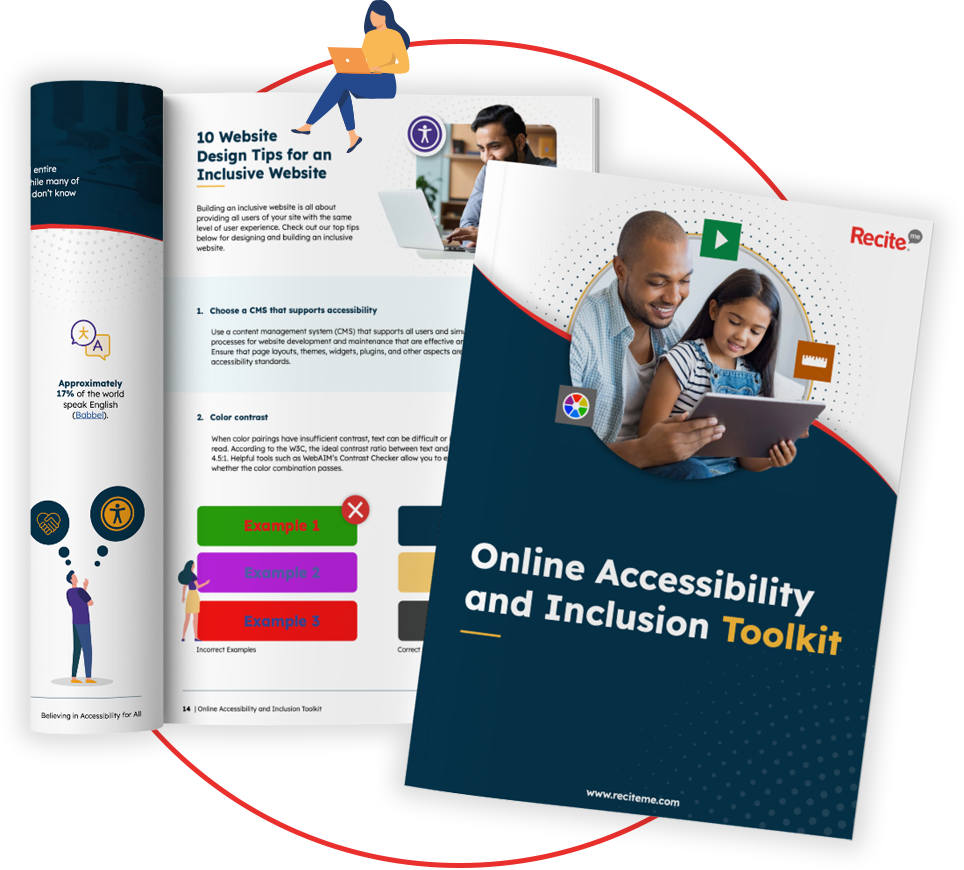
What are the benefits of designing accessible Wix sites?
Web accessibility is a popular topic, but businesses might not be aware of the true benefits of digital inclusivity. Why make your websites accessible for disabled audiences? Factors to consider include:

- Reach disabled audiences: One overlooked benefit of accessible websites is that they appeal to new audiences, specifically disabled people, and their families and carers. This creates new opportunities for business and to share brand messaging.
- Boost digital accessibility: Naturally, the most important benefit to designing an accessible Wix website is that it creates more accessible spaces online. Disabled individuals should be able to access digital content as much as any other group.
- Meet legal compliance: Legislation such as the Equality Act 2010 protects disabled people from discrimination. Ensuring that your Wix site is accessible to all avoids you falling foul of these legal requirements.
- Foster an inclusive reputation: Social media can make your digital mistakes more visible to the wider public. Refusing to make your content accessible to disabled individuals could lead to negative reception online.
Conclusion: Final thoughts on Wix accessibility
With built-in accessibility features and simple design tools, Wix is a strong choice for an accessible website platform. But your quest for accessibility shouldn’t stop with your choice of web builder. Digital inclusivity is an ongoing process that requires continuous revision.
As this post has explored, there are lots of practical steps you can take to improve your Wix site for disabled internet users. Ready to get stuck in? Start boosting your inclusivity today with a free website accessibility scan. Or reach out to Recite Me’s experts for tailored support with web accessibility consultancy services.
Wix accessibility FAQs
Looking for a recap or quick summary? Here are a few of our most frequently asked questions to help you get to grips with the essentials:
How do I make my Wix site accessible?
Steps you can take to make your Wix website accessible include:
- Leveraging a website accessibility checker to pinpoint and auto-fix potential issues
- Add alt-text to images to make them accessible for screen readers
- Create a clear page hierarchy with semantically-correct headings.
- Provide captions and transcripts to video content
Is Wix WCAG compliant?
Wix includes WCAG-compliant features to ensure your website can be made accessible for disabled web users. However, this is reliant on developers including accessible features and adjusting style features to the correct standards. Website accessibility is a continuous process, and requires an understanding of regulations, including through accessibility training.
How do headings work with accessibility Wix?
Using headings correctly gives your Wix webpages a clear hierarchy. This means they can be more easily followed by screen readers and those with cognitive disabilities. They should follow a coherent order, with H2s preceding H3s, for example, and have clear HTML tags, rather than just larger or bold text.
What is the accessibility wizard feature on Wix?
Wix’s Accessibility Wizard is a built-in tool that developers can use to scan their website for potential accessibility issues. Once it locates an issue, it can provide steps for making improvements. It has some limitations, however, as it doesn’t cover all website elements, including the side cart.
